#Ghanaian mythology
Explore tagged Tumblr posts
Text
The Marriage of Anansewa: Reimagined
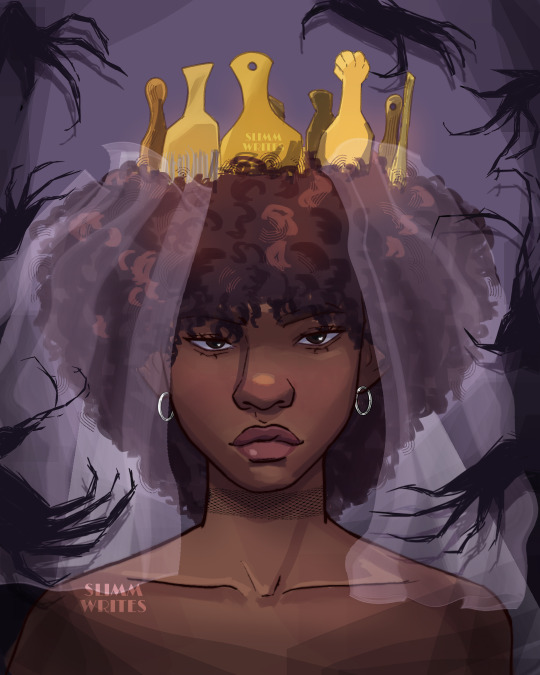

#artists on tumblr#digital art#ghanaian#ghanaian artist#african mythology#mythology#spooky season#horror art#grunge#spooktober#inktober#artober#clip studio paint#black artists#art#artist support#ananse#coraline#halloween#halloween art
93 notes
·
View notes
Text

Love in Color by Bolu Babalola In her debut collection, internationally acclaimed writer Bolu Babalola retells the most beautiful love stories from history and mythology with incredible new detail and vivacity. Focusing on the magical folktales of West Africa, Babalola also reimagines Greek myths, ancient legends from the Middle East, and stories from long-erased places. View the full summary and rep info on wordpress!
#african#asian#bisexual#Chinese#dailybook#disabled#FF#FM#Fictiongen#Ghanaian#mga#Nigerian#queerrep#race#vitiligo#wlw#2020s#300pg#adultbooks#africanmythology#anthology#celebrityromance#chinesemythology#fantasy#femaleprotagonist#forbiddenromance#greekmythology#lgbtqia#mythology#ownvoices
2 notes
·
View notes
Text



The Sun and the Moon - Krachi myth









#mythology#art#comic#african mythology#myth#sun myth#moon myth#folklore#the sun and the moon#krachi mythology#ghana#Ghanaian
333 notes
·
View notes
Text

Hello everyone, it's time for a new book list! This month, I've made a list of books inspired by folklore. Hope you enjoy! I tried to include stories from different countries and cultures. As always, please be sure to vote using the link at the end of the post :)
Onto the books...
Gods of Jade and Shadow, by Silvia Moreno-Garcia
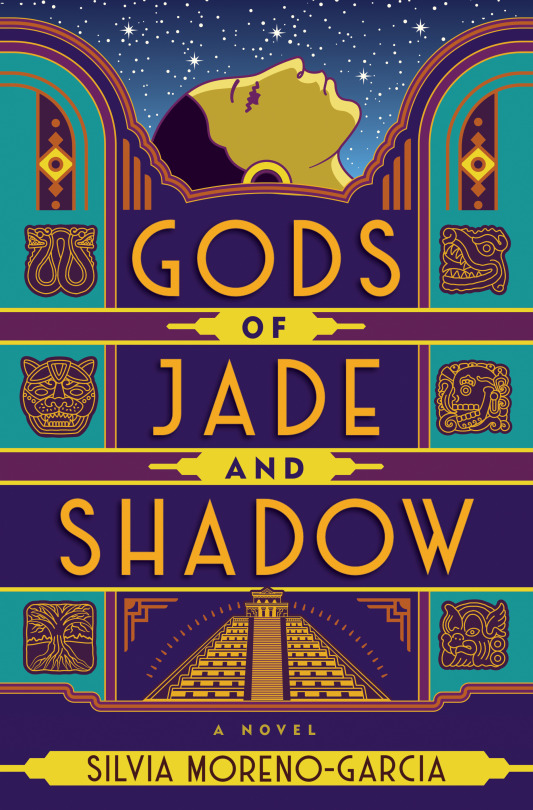
The Jazz Age is in full swing, but Casiopea Tun is too busy cleaning the floors of her wealthy grandfather’s house to listen to any fast tunes. Nevertheless, she dreams of a life far from her dusty small town in southern Mexico. A life she can call her own.
Yet this new life seems as distant as the stars, until the day she finds a curious wooden box in her grandfather’s room. She opens it—and accidentally frees the spirit of the Mayan god of death, who requests her help in recovering his throne from his treacherous brother. Failure will mean Casiopea’s demise, but success could make her dreams come true.
In the company of the strangely alluring god and armed with her wits, Casiopea begins an adventure that will take her on a cross-country odyssey from the jungles of Yucatán to the bright lights of Mexico City—and deep into the darkness of the Mayan underworld.
Deathless, by Catherynne M. Valente
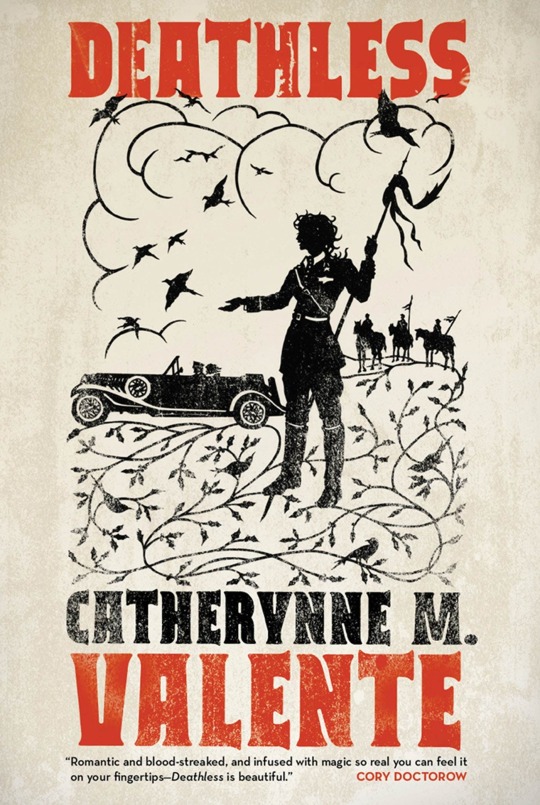
Koschei the Deathless is to Russian folklore what devils or wicked witches are to European culture: a menacing, evil figure; the villain of countless stories which have been passed on through story and text for generations. But Koschei has never before been seen through the eyes of Catherynne Valente, whose modernized and transformed take on the legend brings the action to modern times, spanning many of the great developments of Russian history in the twentieth century.
Deathless, however, is no dry, historical tome: it lights up like fire as the young Marya Morevna transforms from a clever child of the revolution, to Koschei’s beautiful bride, to his eventual undoing. Along the way there are Stalinist house elves, magical quests, secrecy and bureaucracy, and games of lust and power. All told, Deathless is a collision of magical history and actual history, of revolution and mythology, of love and death, which will bring Russian myth back to life in a stunning new incarnation.
Things in Jars, by Jess Kidd
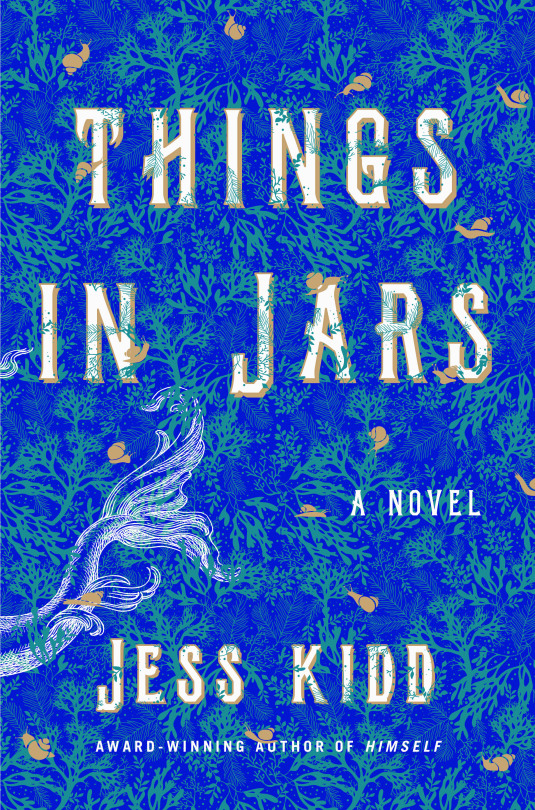
Bridie Devine, female detective extraordinaire, is confronted with the most baffling puzzle yet: the kidnapping of Christabel Berwick, secret daughter of Sir Edmund Athelstan Berwick, and a peculiar child whose reputed supernatural powers have captured the unwanted attention of collectors trading curiosities in this age of discovery.
Winding her way through the labyrinthine, sooty streets of Victorian London, Bridie won’t rest until she finds the young girl, even if it means unearthing a past that she’d rather keep buried. Luckily, her search is aided by an enchanting cast of characters, including a seven-foot tall housemaid; a melancholic, tattoo-covered ghost; and an avuncular apothecary. But secrets abound in this foggy underworld where spectacle is king and nothing is quite what it seems.
Blending darkness and light, history and folklore, Things in Jars is a spellbinding Gothic mystery that collapses the boundary between fact and fairy tale to stunning effect and explores what it means to be human in inhumane times.
Love in Colour: Mythical Tales from Around the World, Retold - by Bolu Babalola
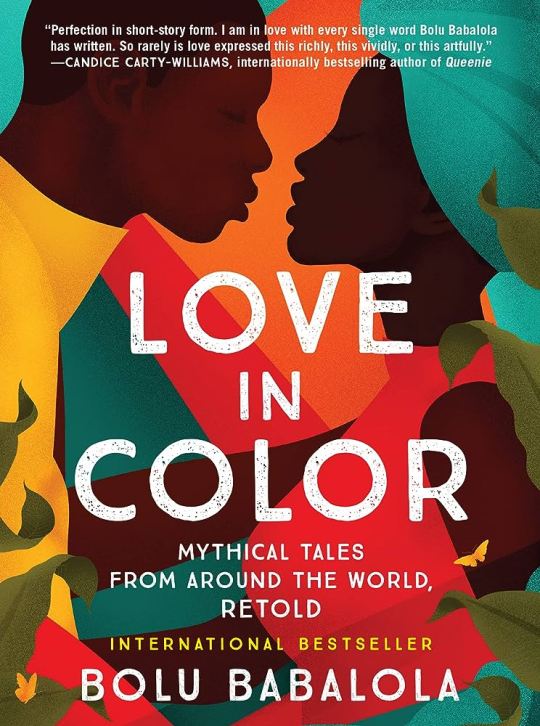
A high-born Nigerian goddess, who has been beaten down and unappreciated by her gregarious lover, longs to be truly seen.
A young businesswoman attempts a great leap in her company, and an even greater one in her love life.
A powerful Ghanaian spokeswoman is forced to decide whether she should uphold her family’s politics or be true to her heart.
In her debut collection, internationally acclaimed writer Bolu Babalola retells the most beautiful love stories from history and mythology with incredible new detail and vivacity. Focusing on the magical folktales of West Africa, Babalola also reimagines Greek myths, ancient legends from the Middle East, and stories from long-erased places.
With an eye towards decolonizing tropes inherent in our favorite tales of love, Babalola has created captivating stories that traverse across perspectives, continents, and genres.
A Master of Djinn, by P. Djèlí Clark
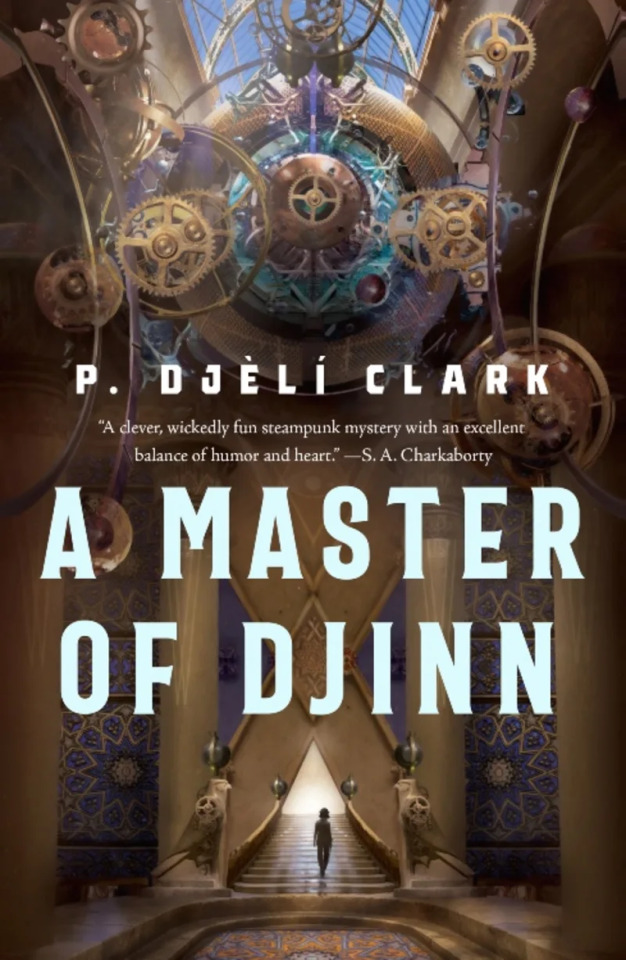
Cairo, 1912: Though Fatma el-Sha’arawi is the youngest woman working for the Ministry of Alchemy, Enchantments and Supernatural Entities, she’s certainly not a rookie, especially after preventing the destruction of the universe last summer.
So when someone murders a secret brotherhood dedicated to one of the most famous men in history, al-Jahiz, Agent Fatma is called onto the case. Al-Jahiz transformed the world 50 years ago when he opened up the veil between the magical and mundane realms, before vanishing into the unknown. This murderer claims to be al-Jahiz, returned to condemn the modern age for its social oppressions. His dangerous magical abilities instigate unrest in the streets of Cairo that threaten to spill over onto the global stage.
Alongside her Ministry colleagues and her clever girlfriend Siti, Agent Fatma must unravel the mystery behind this imposter to restore peace to the city -or face the possibility he could be exactly who he seems…
Please vote for our next book here.
47 notes
·
View notes
Text
General mystery items/collections ideas for my dream Riordanverse unboxings
Weapons
Pins (and an armory themed pinboard or hanging)
Charms to go along with their hiding place (like a charm at the end of a pen for riptide or on a rune pendant for Jack/Sumarbrandr or on a bracelet for Serwa’s blade)
Stickers (and an armory themed sticker book)
Pens
Gods
Playing cards - 14 god cards for each pantheon to correspond with 2-10, J, Q, K, A and a joker/trickster card. And ideally similar gods would be in similar places, so Zeus and Odin might both be kings. Collecting four pantheons would allow you to play any regular 1 deck card game, but maybe having pantheons from similar areas (Greece and Rome, Mayan and Native American, Egyptian and Ghanaian, etc) be the same color would allow for mixing and matching or games where two decks are used, like five crowns. Or could play games like UNO. I once made a game like this for a camp I taught, so this one is close to my heart.
Trading cards with stats for a mythomagic type game across the pantheons
Pins (characters, or cabin sets representing each, or chariot or car, or train car representing them and their power)
Stationary set with quotes
Themed socks (this might be the part of me that wanted to make sock monkeys for each camp halfblood cabin)
Dice sets (Artemis dice on tic tok was doing a Norse mythology one as I was reading Magnus Chase)
Monsters/Enemies
Lenticular cards (many of them morph somehow with the mist)
Trading cards with stats for a mythomagic type game across the pantheons
Stickers! Or magnets/pins.
Tshirts of locations they work (monster donut!)
Plushies
Replicas
Coins (golden drachma, Mayan death/jaguar coin, etc)
Quest items
Prints
Blueprints of important locations
Maps
Family photos/friend or quest group photos in family portrait mode
‘Photos’ from locations or moments between combat
Menus from food places
Report cards or detention slips
Wanted posters
Scrapbook pages (to go with the prints, make your own demigod scrapbook - my inner middle schooler would have gone nuts to use this as a way to do a book reports - note to self, reading notebooks with book report type prompts!)
Lists of chapter titles
Demigods
Wanted poster pins or sticker sets
Pins with themes
Stickers with themes (I saw an awesome sticker set that had what each quest member had packed for a quest)
Famous quotes on bookmarks
Famous quotes as stickers
Detention slip notepads
Their own playing cards or trading cards with stats
Camps/training locations
Tshirts (beyond the usual camp halfblood/Jupiter, I also enjoy seeing the ones like Delphi strawberry farms!)
Lanyards
Maps
Other wearables, like backpacks/hats
Beads for a growing beaded necklace collection
Important locations/realms
Stickers and a 9-realms passport sticker book!
Fairy doors
Keys
Potions or potion ingredients
Runes as stickers (decorated with their meaning somehow)
Puzzles
Mugs or cups
#percy jackson#rick riordan presents#rick riordan#riordanverse#riordan universe#read riordan#heroes of olympus#trials of apollo#kane chronicles#magnus chase#aru shah#Zane obispo#stormrunner#mythology#Sal and Gabi#dragon pearl#Paola Santiago
39 notes
·
View notes
Text
youtube
This LEGO Artist Builds Masterpieces Using All Black Bricks | Obsessed | WIRED
"It just had this appeal to me because you can create the things you don't have." Meet Ekow Nimako, a Ghanaian-Canadian artist who uses black LEGO bricks to build jaw-dropping sculptures.
While some of his masterpieces take nearly one-thousand hours to create, he has the ability to prototype a new design in just one day. We tour his home studios where he began creating his breathtaking art and explore some of his custom builds inspired by Black mythology.
15 notes
·
View notes
Text
Blair Nasir Rafferty
Blair is the captain of an infamous military ship known as The Orient. He witnessed both his father and brother perish in battle, his mother dying shortly after his birth.
After the death of his brother, Blair felt like he was obligated to continue the family tradition of running the ship until death. Countless times has he gotten injured and almost died, but guilt and the constant feeling that HE had to be the one protecting his crew drive him forward.
Blair is a character that may require lots of research into cultures I’m unfamiliar with. He’s a mix of a species of people based on arctic foxes and a species of people based on fennec foxes.
For the arctic fox people, or Sneacaines, I wanted to base their culture off of celtic, norse and a little bit of japanese mythology and culture. For the fennec fox people, or Farsarakines, I wanted to base their culture off of persian, hawaiian, arabic and maybe even some ghanaian mythology and culture.
Everything about him may change as I research these cultures and develop lore for this world, but as of right now he feels like a pretty set character.
Due to the fact that his crew is a mix of many different cultures, and because his parents and brother died when he was pretty young, I feel like he’d be way out of touch with both the Sneacaines and the Farsarakines. He wouldn’t be curious about his families cultures, as he has more to deal with, but when he meets Sorima, Kyaverre (Name subject to change), and Morstora (Also subject to change), he’ll end up learning more about other cultures and his own.
If there is anything you’d all like to know about him or other things about this world, you could ask! I might make one of those ask accounts if I flesh more of his world out. Alright, thank you!
2 notes
·
View notes
Text

This is my Starfield Character Seikou Anansi in front of his ship The Widower II. The character was inspired by Anansi the Spider, the trickster god from Ashanti/Ghanaian mythology.
He's a Neon Street Rat, a thief and a Pirate. So far my favorite factions are Ryujin Industries and Crimson Fleet.
Hes level 21. Seikou hates UC Sysdef and the Disciples. He's also persuasive, has a high thief stat, and uses pistols. He likes street level quests that keep him engaged with the community. He likes to know all the little people and their little habits, mostly so he can know who to rob, who to protect and who to ignore.
He's no Robin Hood, but he has a code of conduct. He doesn't hurt civilians (on purpose) doesn't rob his allies, and doesn't take missions against the Freestar Collective.
I just finished the Crimson Fleet faction quests then I'm gonna finish Ryujin Industries questline before I complete the main story and begin my new game plus.
9 notes
·
View notes
Text
Meet my alternate universe Spider-Person, Weaver! Afua is a poor Ashanti teenager living in Ghana. Anansi, the trickster spirit/god of stories, wisdom and knowledge, decides to fuck around and find out what it would be like to possess a random human body (he's also avoiding his problems). Instead he ends up sharing consciousness with her and gifting her his diluted powers. One traumatic lesson about power and responsibility later, they're an urban fantasy superhero. And on their way to becoming a found family.
There is also a very long, very dramatic outline of my ideas for the rest of their lives, including multiple comic book-style eras, supervillains, friends, family, love interests, summaries of major stories and a lot of character development. You don't have to read all of that. But you can if you want!
Note: I am not Akan or Ghanaian. I have tried to portray the Akan religion accurately and sensitively while still adapting it for narrative purposes. If you have more knowledge than me on Ghana and the local cultures, please tell me if anything is inaccurate or offensive and how to improve.
#i still haven't seen across the spider-verse yet#so the spider-society does not feature#update: i have seen it now (BEST. MOVIE. EVER) but i can't be bothered to integrate it into the timeline#it's a really long complicated timeline okay? read it! it's a lot to rework!#spider-verse ocs#spidersona#spider-verse#anansi#akan mythology#ashanti mythology#african mythology
15 notes
·
View notes
Text
Esther Mahlangu's artistic style and cultural influence make her a unique artist. While it is difficult to find artists who share the exact combination of her distinctive Ndebele-inspired aesthetic and cultural context, there are artists whose work exhibits similarities or resonates with certain aspects of her art. Here are a few artists who explore themes of cultural heritage, vibrant colors, and geometric patterns, which may evoke a sense of affinity with Esther Mahlangu:
Nelson Mukhuba - A South African artist known for his colorful geometric patterns and contemporary interpretations of Venda culture.
Billie Zangewa - A South African artist who incorporates vibrant textiles, storytelling, and personal narratives to explore themes of identity and womanhood.
Firelei Báez - A Dominican-American artist whose work often involves intricate patterns, cultural references, and explorations of identity, memory, and history.
Wangechi Mutu - A Kenyan-American artist who combines collage, painting, and sculpture to explore themes of African identity, femininity, and cultural mythology.
El Anatsui - A Ghanaian sculptor renowned for his large-scale installations made from recycled materials, which resemble vibrant tapestries and evoke the traditions and history of West Africa.
Yinka Shonibare CBE - A British-Nigerian artist known for his use of African fabrics, vibrant colors, and historical references to explore themes of colonialism, globalization, and cultural identity.
While these artists may share certain resonances with Esther Mahlangu's work, it's important to note that each artist has their unique artistic voice and cultural context. They contribute to the rich diversity and ongoing dialogue within the contemporary art world, celebrating and exploring different aspects of cultural heritage, identity, and artistic expression.
3 notes
·
View notes
Text
youtube
This LEGO Artist Builds Masterpieces Using All Black Bricks | Obsessed | WIRED "It just had this appeal to me because you can create the things you don't have." Meet Ekow Nimako, a Ghanaian-Canadian artist who uses black LEGO bricks to build jaw-dropping sculptures. While some of his masterpieces take nearly one-thousand hours to create, he has the ability to prototype a new design in just one day. We tour his home studios where he began creating his breathtaking art and explore some of his custom builds inspired by Black mythology. Check out more of Ekow's work on TikTok: @ekownimakostudios Director: Charlie Jordan Director of Photography: Dave Sanders Editor: Jordan Calig Expert: Ekow Nimako Creative Producer: Wendi Jonassen Line Producer: Joseph Buscemi Associate Producer: Brandon White Production Manager: D. Eric Martinez Production Coordinator: Fernando Davila Camera Operator: Jerome W. Tan Sound Mixer: Dave Plank Production Assistant: Andrew Vance Post Production Supervisor: Alexa Deutsch Post Production Coordinator: Ian Bryant Supervising Editor: Doug Larsen Assistant Editor: Justin Symonds Still haven’t subscribed to WIRED on YouTube? ►► http://wrd.cm/15fP7B7 Listen to the Get WIRED podcast ►► https://ift.tt/kvoIB4Q Want more WIRED? Get the magazine ►► https://ift.tt/mtWyR7k Follow WIRED: Instagram ►►https://ift.tt/8GROcrv Twitter ►►http://www.twitter.com/wired Facebook ►►https://ift.tt/bUXfhAP Tik Tok ►►https://ift.tt/9CcbfYG Get more incredible stories on science and tech with our daily newsletter: https://wrd.cm/DailyYT Also, check out the free WIRED channel on Roku, Apple TV, Amazon Fire TV, and Android TV. ABOUT WIRED WIRED is where tomorrow is realized. Through thought-provoking stories and videos, WIRED explores the future of business, innovation, and culture. via YouTube https://www.youtube.com/watch?v=wR-i-pqFqqE
0 notes
Text
Kid Anansi Releases Eponymous Debut Album on Aquamarine Records – Sept, 23rd

Hot off the heels of an international tour, Kid Anansi is set to release his highly anticipated debut album on September 23rd via Aquamarine Records. The self-titled album, "Kid Anansi," is a groundbreaking blend of spoken word, music, and comedy, capturing the essence of his artistic journey.
The album reflects Kid Anansi's evolution as an artist, showcasing his growing confidence in both his identity and sexuality. Known for his whimsical storytelling, Kid Anansi uses his platform to explore and celebrate the complexities of being British Ghanaian. His work challenges the status quo of what it means to be considered Black, and he aims to empower his community through his art.
Since his standout performance on the BAFTA award-winning first season of "Life & Rhyme" alongside Benjamin Zephaniah in 2020, Kid Anansi has taken his poetry to new heights. His work is deeply inspired by the cultural contradictions he faces—often perceived as "too Black" in some circles and "not Black enough" in others. Through his art, he navigates these dualities with humor and grace, telling stories that bridge the gap between two worlds.
Kid Anansi's storytelling has been described as a unique blend of Zack Fox's sharp wit and the legendary West African griots' timeless wisdom. His chosen name, Anansi, is a nod to the Ghanaian mythological trickster who, in the form of a spider, is the keeper of all stories. Much like the mythical figure, Kid Anansi shares his world through his own distinct lens, offering audiences a glimpse into his lived experiences.
In addition to his solo work, Kid Anansi has graced the stages of renowned festivals such as Glastonbury, Cardiff Poetry Festival, Latitude, Shambala, Sheffield's Tramlines, and Guernsey's Vale Earth Fair. Beyond performances, he dedicates time to leading workshops for children, helping them develop writing and performance skills, while fostering their confidence.
Kid Anansi's debut album is more than just a collection of tracks; it is a statement of identity, resilience, and creativity. His unique voice is set to make waves in the music and spoken word scenes, bringing a fresh perspective to audiences worldwide.
Media Contact: Stevie B Mia Mind Music Phone: 201-656-5458 Email: [email protected]
0 notes
Text
Welcome to Chaos
Entropy
Multifandom, 18+
- Artist
- Writer
- OSDD sys
- African American (Ghanaian + Black American)
More about us below the cut!
- Greek Mythology
Fandoms we're in
Things we're doing
- The Mechanisms
- Constellations
- Ancient Babylonian/Mesopotamian Mythology
- Arcane
- sometimes mcyt smps (qsmp and more)
- making a fake language and culture
- Minecraft Mythology
Ask us anything, we're all ears <3
- Learning Spanish more fluently
- Learning Fante
Guide so far
#Dr3ams Mytholgy Rants - me ranting about mythologies; greek, my personal creations, etc, you name it im ranting probably here
#Dr3ams Mc Mythology - the current mythology I'm making surrounded by characters in minecraft and well known players as well as a few notorious or nostalgic players from the past
#personal rambles: aeolus - where I, the cohost of the system, ramble personally!
#Fandom Rants - where we rant and over analyze things from the fandoms we're in
#idk what im doing#introduction#Dr3ams Mythology rants#Dr3ams Mc Mythology#personal rambles: aeolus#fandom rants
1 note
·
View note
Text
Meet Ekow Nimako, a Ghanaian-Canadian artist who uses black LEGO bricks to build jaw-dropping sculptures inspired by Black mythology.
youtube
#blackowened#blackownedbiz#art#canada#africa#ghana#ghanaian#artist#black art#black artist#african#afrique#black excellence#Youtube
1 note
·
View note
Photo


4me4you visits PM/AM Gallery which featured the artist LORD OHENE - “figurative and portraiture scene”.
Lord Ohene Okyere-Bour, a leading artist within the emerging contemporary Ghanaian figurative and portraiture scene. Lord is a leading voice in a group of artists who have come through the revered Ghanatta College of Art and Design.
Within the vibrant movement of African portraiture, Lord found his own style in the implementation of contour layering in his work. Using oil pastels this technique transforms deep black voids on the canvas into faces alive with both expression and character, drawing the eye of the viewer with a gentle magnetic force.
The lines themselves suggest the topography of the Ghanaian landscape and the movements and cultural developments it has witnessed. Usually incorporating a celebratory use of gold, in combination with other colours, through the lines on his faces Lord tells us of the paths his ancestors have followed.
Concentrating his focus onto a single subject, the muse who has inspired this new body of work, illustrates a sense of maturity and confidence that one would associate with an artist on the edge of a major career shift. It provides a strong link to the roots of the muse –originating in Greek mythology– and recontextualising modern Ghanaian painting as a robust presence within art history.
0 notes
Text
Yess!!!! I’m so glad someone said it. There are so many cultures and mythologies to choose from! Honestly, can you imagine all the amazing and plethora of African fashion to draw inspiration from, beautiful and fun hair designs (in the right hands) — and OH, can you imagine the MUSIC if they get the right producers??? 😭😭🙏🏾
Manifesting afrobeats, afropunk, or amapiano in Dislyte!!
I need to post my Liberian and Ghanaian Dislyte OCs here sometime.
I really wish dislyte would delve into African mythology more outside of Egypt, like there’s so much potential there I’m sick 😭
21 notes
·
View notes